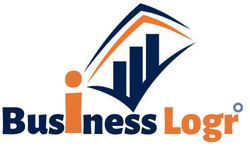
Flipkart, Snapdeal, and Amazon have very similar strategies, which makes success a function of two variables—funding and operational efficiency.
Van Heusen and Louis Philippe have new TV ads in India. Both shirt brands were launched in India in the late 1980s/early 1990s by Coats Viyella India Ltd and subsequently sold, along with the apparel business, to the Aditya Birla Group sometime in the late 1990s.
Back then, the distinction between the two brands was clear. Van Heusen was for aspirational middle/senior management types keen to make a mark. Louis Philippe was for CEO types that had arrived. This difference was evident even in the price tags. Coats subsequently launched Allen Solly, meant for the creative types. And Peter England, a value-for-money offering aimed at young executives.
Such distinction, even if it is in the mind of the customer (advertisers call this positioning) is important—between brands in one company’s portfolio, and across competing brands.
For instance, when Arvind Ltd brought Arrow to India, its initial positioning was as a banker’s shirt and, sure enough, just like advertising executives sported Allen Solly shirts, bankers and investment bankers sported Arrow. Such distinction is absent in the latest TV ads for Van Heusen and Louis Philippe. Maybe it is because brands such as Van Heusen and Arrow and Louis Philippe filled a vacuum in the premium shirts market in India in the 1990s, but with the market now being crowded with even more premium offerings, they no longer enjoy the cachet they once did.
It isn’t just consumer brands that need to position themselves differently from their competitors. In the early 2000s, most people who had anything to do with the IT business (analysts, employees, customers, even journalists) knew the difference between Infosys, Wipro and Satyam. Infosys had positioned itself as a slightly expensive service provider (its billing rates were higher than its rivals’) with expertise in banking and financial services; Wipro had managed to make a name for itself in hi-tech services, especially for telecom equipment firms; and Satyam was known for its large business software practice, which helped companies around the world customize and implement expensive business software they had bought from companies such as SAP.
Later that same decade, Vodafone showed it was possible to position oneself differently even while offering the same service at the same price; the firm’s offering was somehow considered more premium.
India’s e-commerce biggies Flipkart, Snapdeal, and the local website of Amazon probably think it is too early for them to differentiate themselves when their primary challenge is to grow the market.
According to a February report by the Boston Consulting Group (BCG), the overall retail market in India is expected to almost double in size to $1 trillion in 2020 from $600 billion in 2015. Of this, modern trade is expected to grow three times from $60 billion to $180 billion. And the e-commerce market is expected to quadruple from $15-18 billion now to $60-70 billion. The main drivers of this growth, BCG said, were “broader assortment, higher discounts, and greater convenience”.
That probably explains why Amazon, Flipkart and Snapdeal continue to tout convenience, their extensive range, and their low prices in their ads. Which means that no matter how creative their ads are, they are essentially tactical.
Then, this approach shouldn’t surprise anyone. After all, on the face of it, the three have very similar strategies, which makes success a function of two variables—funding and operational efficiency.
[“source -livemint”]




